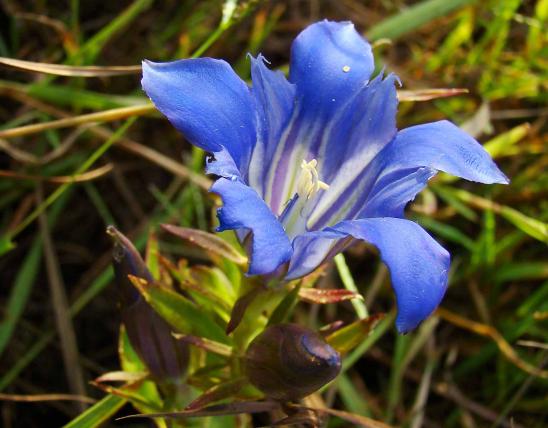
Rose-pink, also called rose gentian, is a biennial wildflower whose first year is spent as a basal rosette of leaves; it sends up a flowering stalk the second year. The many opposite branches make it look like a candelabra; the stems are square in cross-section and are winged.
Each flower is borne on a stalk arising from the upper leaf axils, to 1 inch across, with 5 spreading corolla lobes; pink (in some localities white), with a green or yellow inner ring; delicately scented. Blooms June–September.
The leaves are opposite, sessile, clasping the stem, ovate to lanceolate, lacking teeth, to 1½ inches long.
Similar species: Prairie rose gentian (S. campestris) has the branches in the flower cluster alternate, not opposite; its calyx tube is prominently 5-ribbed or winged (not smooth), and the plant grows only to about 9 inches tall. It is found in prairies, fields, and roadsides, mostly in the southern two-thirds of the state. Another species, marsh pink (S. brachiata), is rare in our state, having been recorded only from Butler County in southeast Missouri; on it, the lower half of the stem is circular in cross-section (not square as in rose-pink) and is not angled, though the upper half of the stem is angled. Also, its leaf bases are not clasping. Otherwise, it resembles rose-pink.
Height: to 2 feet.

Found in southern, northeastern, and east-central counties.
Habitat and Conservation
Occurs in glades, prairies, upland ridges, fallow fields, margins and openings of woods, thickets, roadsides, and rights-of-way. Usually grows in acid soils.
Status
Native Missouri wildflower.
Human Connections
This showy native wildflower should be used more often in flower gardens. The plants reseed themselves and can have a more or less permanent presence. They prefer fairly acid soil and an open situation. Don’t dig plants from the wild; get them from reputable wildflower nurseries.
Ecosystem Connections
Bees, butterflies, and skippers visit the flowers, and at least a few moth or butterfly species use it as their larval food plant.






































